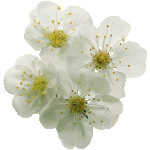Lectures
The lectures will be in german and translated into english.
Sananga - Psychonautical Depth of Field – Felix Pansegrau
A South American plant from the dogbane family (Tabernaemontana undulata/sananho) has been used for centuries by the indigenous peoples living in the Amazon region as a kind of medicinal all-rounder. In particular, the sap of the leaves and the root bark are used as eye drops, which can sharpen a hunter's vigilance and intuition as well as clearing energetic blockages in the entire body. Furthermore, it is said to protect against misfortune and the attachment of negative energies, to make it easier to recognise the intentions of other people, and to sharpen the capacity for inner insight. Thus, in some indigenous traditions, sananga is also used in conjunction with other rituals (e.g. ayahuasca) that evoke transcendent states of consciousness in order to experience them more clearly and with greater focus. In alternative western medicine, sananga is slowly but surely gaining in recognition.
Felix Pansegrau provides insights and perspectives on the various possible applications of this promising medication with reference to psychedelic culture and makes an attempt at a general scientific classification. Based on this example and referring to other nature rituals from the South American region, the four important pillars of a ceremony are discussed in depth: Intention; attitude towards expectations; surrender; integration.
In addition, a root affecting the mouth and throat (heliopsis longipes), the nasally applied rapé (various snuff tobacco mixtures) and kambo (frog medicine) as animalistic hunting tool, are presented in relation to modern psycholysis. The discussion addresses the general issue of the extent to which these traditional tools can accompany the overall process of a psycholytic session in the form of preparation and post-processing.
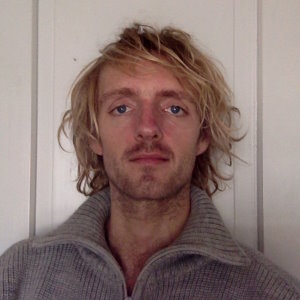
Set und Setting of a Psycholytic Psychotherapy – Marianne Principi
Substance-assisted psychotherapy belongs in a professional setting, which means that everything must be carefully prepared and thoroughly followed up. Accompanying someone through this profound, consciousness-expanding experience is very individual, but a few principles always apply. What comprises a responsible attitude from the therapist's point of view, but also as mindset in the client, are the themes we want to explore together in this lecture.
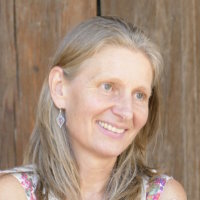
Born 1968 in Solothurn, federal cert. in commerce, registered nurse, since 1997 delegated psychotherapist.
As delegated psychotherapist und seminar organiser in the Medical Practice for Psychiatry and Psychotherapy of Dr. med. P. Samuel Widmer Nicolet und Dr. med. Sebastian Weidenbach, Marianne Principi has many years’ professional experience in this area of expertise.
She lives as mother of grown-up children with her extended family and close circle of friends in the Kirschblüte Community in Lüsslingen-Nennigkofen.
Psycholysis in True Psychotherapy – Kasia Weidenbach
Psycholytic therapy is an increasingly recognised form or tool in psychotherapy today. It can, where appropriately indicated, accompany people in different phases of a therapy and beyond.
At the same time, working with psychoactive substances is also a "magical" process that follows its own laws and can provide not only deep insights into one's own soul, but also go far beyond into collective and spiritual realms.
This is why it has its place in both scientifically based therapeutic treatment as well as in a modern shamanism that does not allow itself to be confined to any form.
In true psychotherapy, psycholysis is both an effective therapeutic tool and an all-renewing, revolutionary, and visionary force that can have a personal and social impact.
The lecture tries to form a bridge between these areas, describes different inner maps that are useful in the therapeutic process, and also addresses the question of what makes a psycholysis therapist.
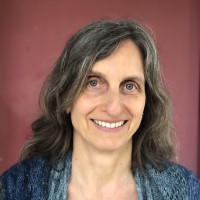
Physician, psychotherapist, psycholysis therapist
Psycholysis training, psycholysis training assistant, and master course training conducted by Danièle und Samuel Widmer Nicolet
Co-founder of the medical doctors’ association Avanti
Mother of six children, living in the Kirschblüte Community since 2005, lifelong engagement with therapy and self-knowledge, community, Tantra, expansion of consciousness, and spirituality.
The Deep Dimensions of Psycholysis – Danièle Nicolet
In her lecture on this subject, Danièle Nicolet provides insight into the multi-layered spaces of the past, present, and future dimensions of a well-founded and conscious psycholytic work, which in addition to the level of psychotherapy, also includes first and foremost the level of spirituality, collective consciousness, and common cultural orientation.
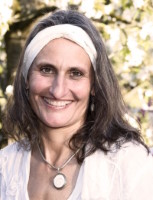
Psycholysis as Component of a Fulfilled Life – Janine Züger and Joshuan Nicolet
Psycholytic experiences and therapy sessions are occasional events in the lives of individuals. But where does this affect everyone and our practical everyday lives?
Janine and Joshuan are a young couple in the Kirschblüte Community who are exploring the vision that emerges from psycholytic experiences. They ask the question of where does successful therapy lead and what could be the impact on personality and on living and working together in everyday life.
They claim that spiritual experiences, birth and death, as well as magic - which are more easily accessible to us through psycholytic experiences - are an integral part of every life and that consciously dealing with them leads to greater responsibility and happiness in personal life and has positive effects on togetherness and, on a larger scale, even promotes peace and harmony in the world and an healthy interaction with it.
Wrestling with warrior discipline, patience and compassion, capability for happiness and a life full of love and community will always remain a task with new hurdles, but these aspects will nevertheless gather and materialise around you.

Significance of MDMA – Ecstasy as Psycho-Pharmaceutical for the Treatment of Posttraumatic Stress Disorder (PTSD)
Since MDMA was first synthesised in 1914 by the Merck company as an intermediate product in research into amphetamines, it has had a varied history of use and consumption. It was rediscovered and synthesised by the chemist Alexander Shulgin in 1962. Until it was banned in the USA in 1985, the substance was widely used in psychotherapy. Following ground-breaking studies by the British psychopharmacologist D. Nutt, who was able to prove the low risk-potential of the substance, there is currently very intensive research on the scientific evaluation of MDMA in various illnesses, but especially for the treatment of PTSD. A phase III study was completed in January 2023 and is currently being evaluated. What new therapeutic possibilities does this substance offer for the treatment of PTSD? What significance could it have in comparison to established therapies? What will have to be considered when using it?

Karsten Prause has been pursuing scientific research into psychoactive substances and their possible applications in different settings, for different indications and in the transcultural context for many years.
Neuro-Affective Meditation – Helena Gemmel
Since the decade of intensive brain research in the 1990s, knowledge about what constitutes altered states of consciousness has been constantly renewed and refined. It is now possible to detect whether a subject is having mystical experiences by measuring brain waves. This is exciting for those who practise meditation in that it shows possible ways to navigate one's own brain in certain oscillation patterns. So-called heart coherence plays an important role in this, as the heart acts as an amplifier to inspire the brain to produce intense and synchronised waves.
Research on the developmental psychological and neurobiological level is important here, especially the distinction of the three-part brain into autonomic, limbic and cortical systems. This knowledge makes it possible to recognise fixations on one level in a targeted manner, to release them, and to bring them back into flow, into connection.
Meditation is the natural consequence of a free energy system in the body that is held, breathed, and flooded by life. The resulting brain frequencies can lead far beyond the theta range into the gamma range. The untrained brain has a maximum spectrum of 3 standard deviations at its disposal. At the HeartMath Institute - at that time still with the collaboration of Dr. Joe Dispenza - EEG recordings were made that recorded 260 standard deviations above normal. This shows that an almost incomprehensible amount of energy in the brain can be released, which requires corresponding stability and grounding. What then happens in meditation is beyond our control and asks for our surrender. The practices and experiences that have existed for thousands of years and their confirmation in the scientific experiments of recent times may be our inspiration and motivation on the path to enter even deeper into unknown dimensions.
In this lecture we will look at the specifics of the functional and structural brain in relation to their importance for meditation, distinguish between top-down and bottom-up processes, and explore the role of the pineal gland and its detoxification.

Mother and grandmother
«Entrusted to the power of the earth in all phases of transformation».
Iboga - Mystical Entheogen from Africa– Tobias Erny
The root bark of the Tabernanthe iboga shrub, which is relatively unknown in the western world, has long been considered a sacred medicine in Western Equatorial Africa.
It is used for initiation, as a catalyst to spiritual progress, and enables communication with realms beyond our world. The pharmacologically induced near-death experience is central element of the African Bwiti cults.
Due to its unique neuropharmacological properties, iboga facilitates withdrawal from various drugs and has gained a reputation as a powerful tool in psychotherapy. Microdosing with iboga is becoming increasingly popular and is used for a variety of physical and psychological medical conditions.
This lecture will give an overview of the African iboga tradition as well as the mechanisms of action and the resulting possible applications.
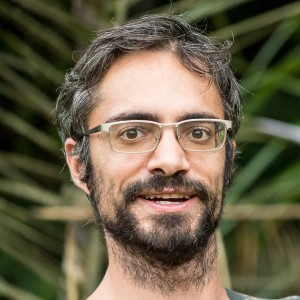
Fascinated by their enormous possibilities, he immersed himself deep into research and work with traditional plant medicine.
Together with the team at Nachtschatten publishing house, he published the German standard work on iboga. He organises conferences, gives lectures on the subject and is currently working with the Beckley Foundation on a study using iboga microdosing aimed at making life easier for Parkinson's patients.
In addition to his educational work at universities, conferences and other events, he is a board member of the Global Iboga Therapy Alliance GITA) - a non-profit organisation dedicated to spreading knowledge about iboga and its alkaloids. In particular, its aim is to support the sacramental and therapeutic use through sustainability initiatives, scientific research, education and knowledge sharing.
